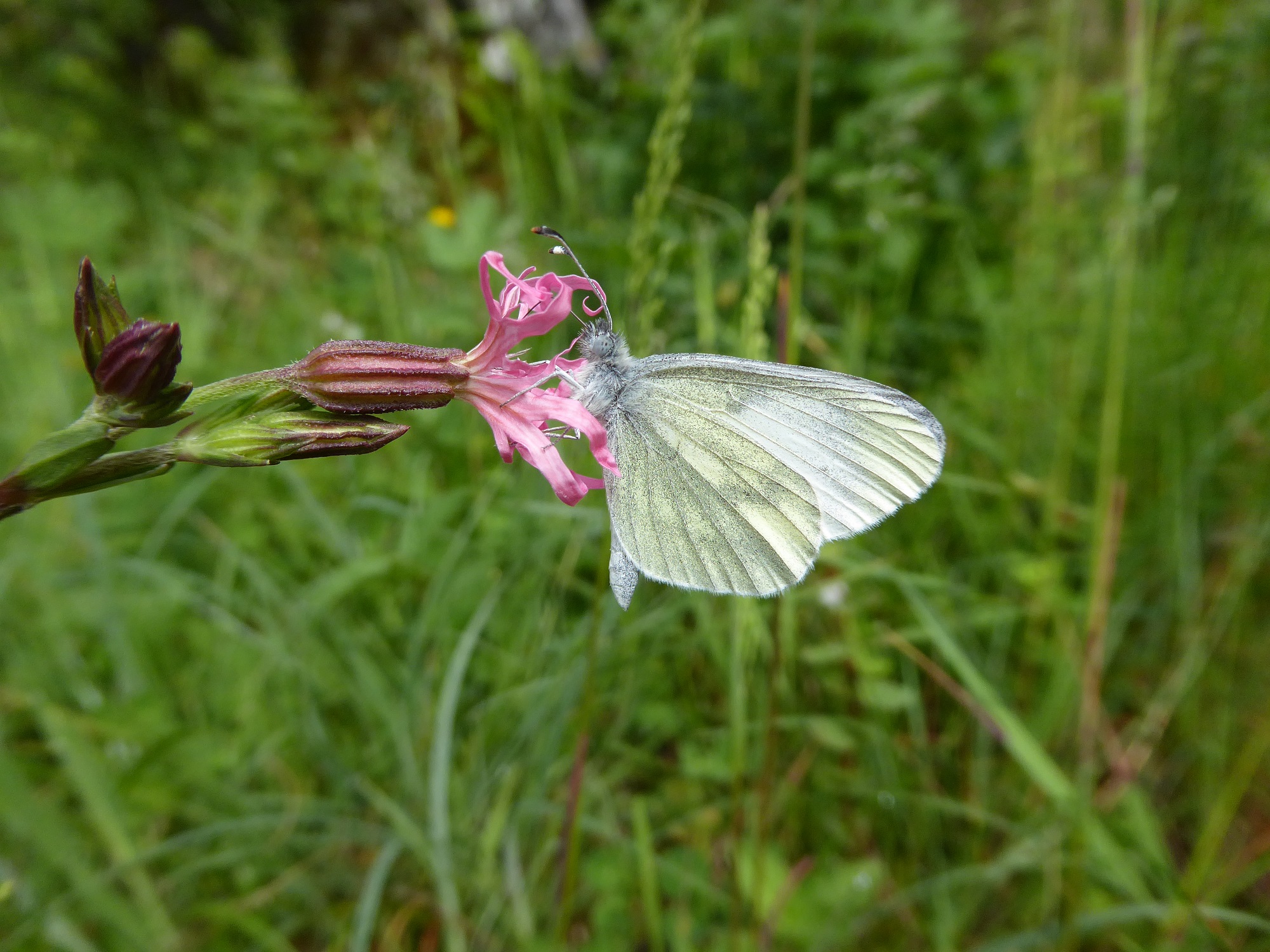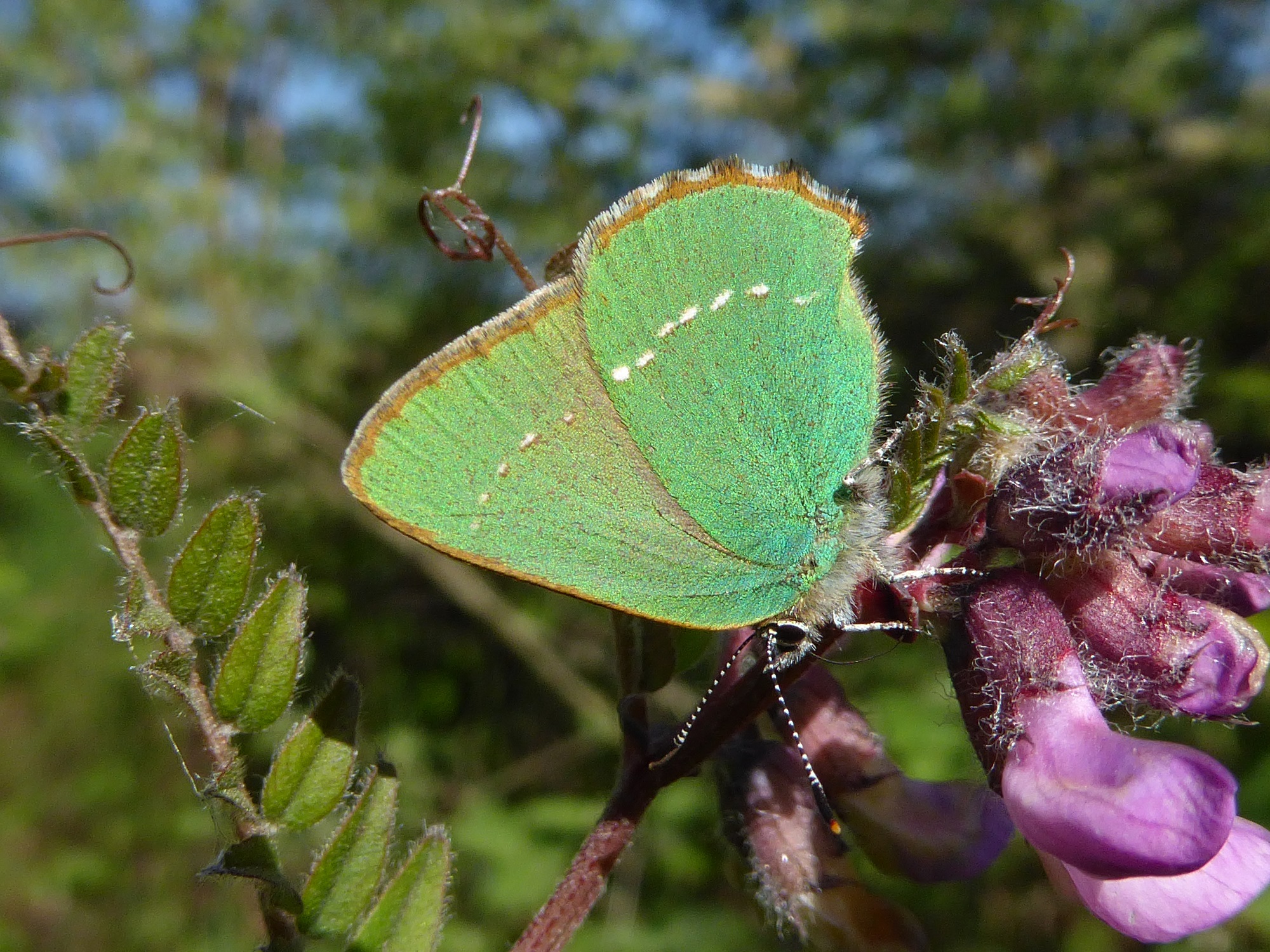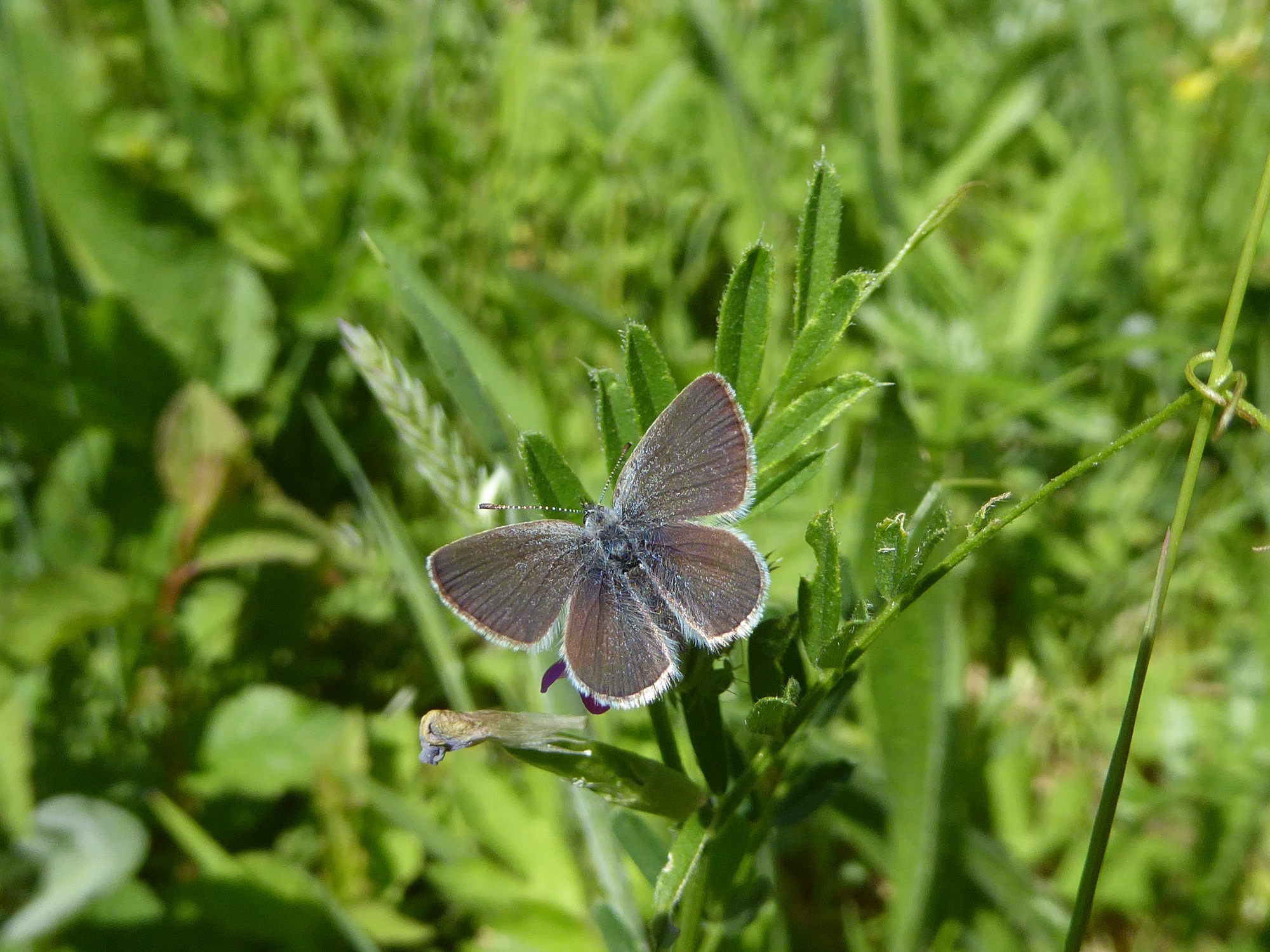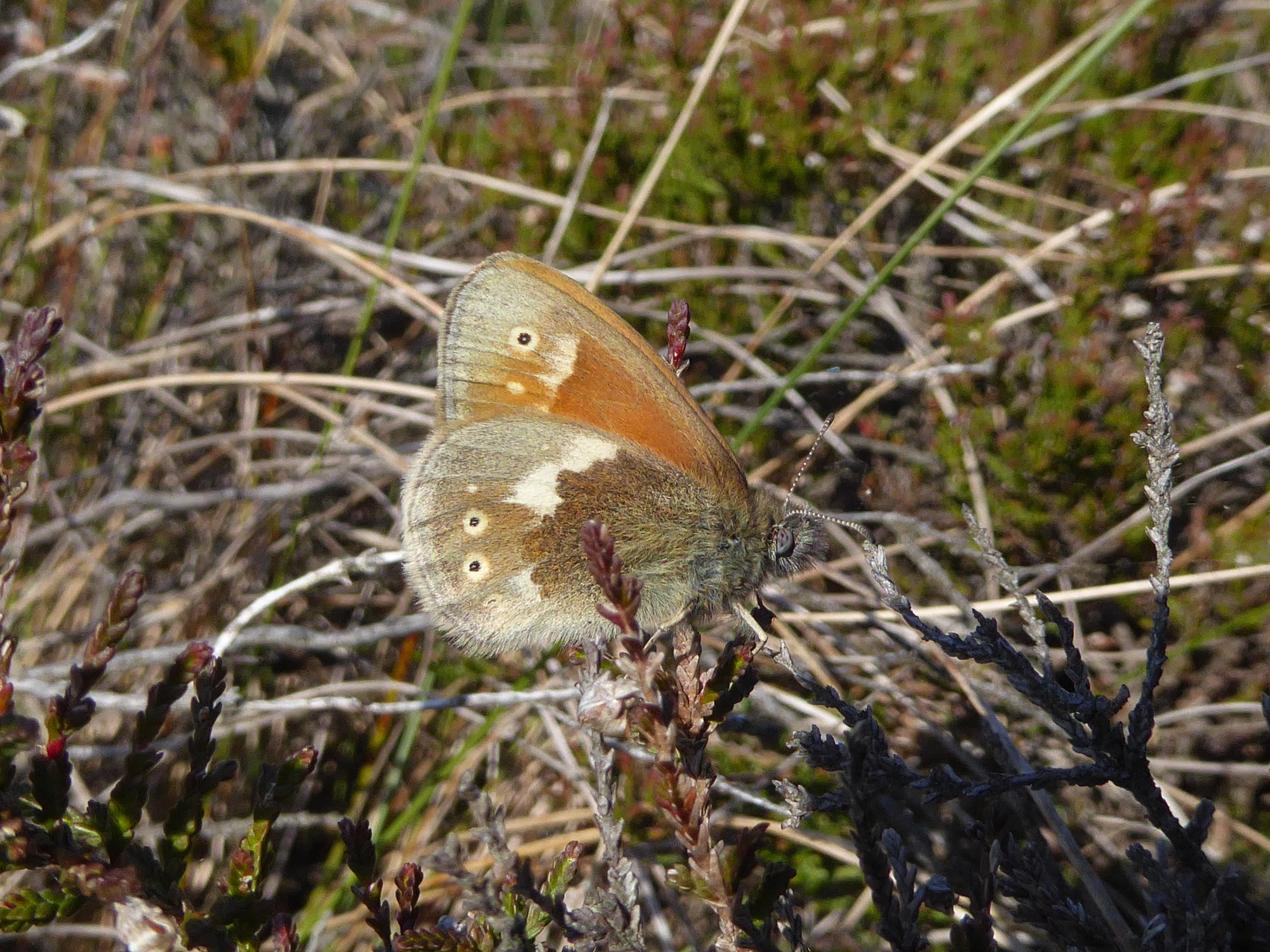In Ireland June is the first month of summer, according to meteorologists. It is the month with the longest days, the best plant growth, the month of orchids and the peak month for butterfly species. Only a handful of butterflies do not fly in June. These are the Essex Skipper, Silver-washed Fritillary, Brown Hairstreak, Purple Hairstreak, Grayling and Hedge Brown. Every other species is on the wing and for some this month is their peak flight time.
The species that are especially notable just now are the Wood White, Green Hairstreak, Small Blue, Marsh Fritillary and Large Heath.
The Wood White, a rarity headquartered in The Burren in Counties Clare and Galway is a delicate-looking white butterfly, identical in appearance to its close relative, the Cryptic Wood White. Both are now very busy laying their eggs. The butterfly may be seen in the hazel scrub in The Burren, fluttering delicately as it searches painstakingly for the correct vetches growing in the correct positions. Last Monday I watched a female take 20 minutes to find a vetch on which to lay a single egg. When it fluttered very low it was eyed eagerly by a young frog. No wonder the Wood White is so rare! Below is a photograph of a male on Ragged Robin.
The Green Hairstreak is one of our smallest and most easily overlooked yet beautiful butterfly, sporting in bright light a shining green reminiscent of a bejeweled rain forest butterfly. It is a species of damp scrub, typically at the edge of bogs where it feeds mainly, I suspect, on Bilberry. It does have several other larval food plants but Bilberry patches in sheltered areas are the most reliable places to look for it.
Both sexes are fond of nectar, especially of the nectar of Bush Vetch. Agitate a tuft of flowering vetches, stand back and watch. A shimmer of green and dark brown (the upper surfaces are brown but the butterfly always rests with closed wings, which are green) are vaguely glimpsed while the butterfly is airborne. When settled, approach carefully for a good view. As you see from the photograph, seeing it up close is a treat.
The Small Blue is described well by its adjective but poorly by its noun. It is certainly small, but is not blue. The male only has a dusting of blue scaling near the base of the upper surfaces of the wings, the iridescence giving the butterfly a bluer appearance in flight than the settled insect has. The species is endangered and has only one food plant. The food plant occurs only on calcareous soils. It cannot withstand heavy grazing by any animal or any sheep grazing and it cannot withstand encroachment by taller vegetation. Strimming the habitat in June or July will wipe out the butterfly which feeds on the flowers only. This species is very easy to miss, but is a charming butterfly, always busy with living.
By contrast, the Marsh Fritillary is lazy. The female is especially relaxed, and perches for long periods on a leaf in the grassland, apparently doing nothing. The males are much more active, zig-zagging over the grassland habitat but even the male will sit still, especially in the mornings when he basks to warm up. The Marsh Fritillary is a lovely butterfly and in the remarkable variety of its colouring, patterning and size, one of the most interesting, with no two ever alike. The Marsh Fritillary holds the distinction of being the only legally protected species of insect in Ireland, enjoying the protection of the Habitats’ Directive 1992. This means that certain areas have been designated as Special Areas of Conservation to protect it. It is a real delight to see a fresh individual and given the fact that it is very rare in many parts of Ireland, one to keep an eye on. Its habitat must be maintained if it is to continue to survive.
The Large Heath will not win any design awards. It is one of our dowdier butterflies, with some specimens looking fairly grey on the wing but it is dying out with the annihilation of its wet bog habitat. One of our most sensitive butterflies, it is in trouble here and in Europe. Because very few people tramp across the tricky ground of wet bogs, it is rarely recorded but it’s out now, so take a look at him while you still can. Think of this bog butterfly’s needs the next time you’re about to throw turf on the fire or garden using peat.
A final and really delightful butterfly is the Small Copper, aptly named. Rarely seen in number, it is a special experience to see a pristine example, like the females below, feeding on a buttercup.
Enjoy the photographs, but get out in good habitats and look for the real thing!
All photographs are © copyright J. Harding.







